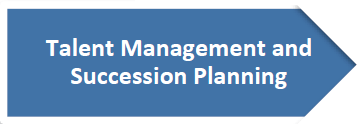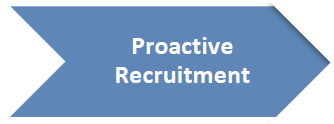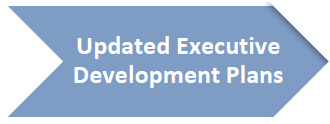Overview of the SES Executive Order
January 20, 2016 in General
By FMP Staff
(Download Printable PDF Version)
On December 15, 2015, President Barack Obama issued an Executive Order to strengthen the Federal Government’s ability to recruit, hire, and develop senior executives.With more than 60% of the Senior Executive Service members eligible for retirement in 2016, the timing of the Executive Order could not be more critical as our government prepares for a Presidential transition. The requirements outlined by the President underscore the importance of developing and implementing human capital management practices with an executive level focus to ensure the continuity of government programs and operations.
Important considerations for the Executive Order include:
- Identifying which requirements apply to your agency and when they do
- Conducting a detailed review of current agency practices to understand how they align and support the requirements
- Developing additional strategies and practices to support the entire human capital lifecycle for the SES from hiring to retiring
Key requirements outlined in the Executive Order include:
- Increasing aggregate spending on SES performance awards and establishing parameters for setting and adjusting executive pay
- Examining and improving the efficiency of the SES hiring process based on OPM’s guidance
- Submitting a 2-year plan to OPM by May 31, 2016 to increase SES mobility (required for agencies with 20+ SES members)
FMP’s Quick Tips to Meet Phased Implementation Requirements

- Conduct a comprehensive 12 year trend analysis to understand turnover at the GS 13 through SES levels before, during, and after Presidential transition years
- Examine and update executive level position descriptions to ensure the roles and responsibilities are current, contemporary and support mission development
- Identify targeted positions that could be temporarily filled by an executive through a mobility program
- Design a reliable assessment to gauge the readiness developmental needs of the next generation of agency leaders

- Analyze current strategies to understand key trends including time to hire, quality of applicants, diversity of candidates, and identify successful recruitment sources
- Develop tailored training for Executive Resource professionals and hiring managers on implementing streamlined recruitment programs
- Engage your current executive corps to serve as recruitment ambassadors
Launch - Deploy hiring process dashboards and tracking systems for information sharing across the organization

- Conduct 360° assessments based on leadership competencies and executive core qualifications to provide targeted feedback and identify focus areas for coaching
- Develop an executive coaching program that pairs qualified, external coaches with new or seasoned executives to give them tools, knowledge, and developmental opportunities
- Launch an action-learning program with knowledge-sharing mechanisms to enable executives to share lessons learned and discuss challenges
- Establish an annual or bi-annual executive leadership retreat featuring discussions on key organizational and leadership topics

- Ensure the agency’s pre-entry on duty process creates a welcoming, engaging, and informative first impression for newly hired executives
- Enhance the onboarding experience with opportunities to socialize new and seasoned executives in order to create interpersonal connections and teach new executives about the organization’s culture, norms, and value
- Establish an executive resources website to centrally house critical job-related information that is tailored to the executive’s role in all major organizational processes
- Launch a knowledge management portal to transition key information from outgoing executives to incoming executives
Additional Resources
- Executive Order – Strengthening the Senior Executive Service
- FMP case study of federal executive development program
- Act now before SES positions are frozen leading up to Presidential election
Contact Information
Sherean Miller, Senior Vice President
smiller@fmpconsulting.com
703-671-6600 ext. 102
Liana Grassi, Vice President
lgrassi@fmpconsulting.com
703-671-6600 ext. 146